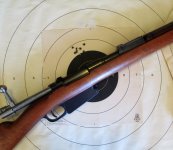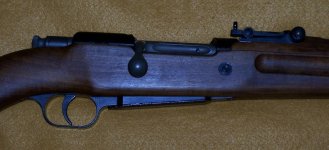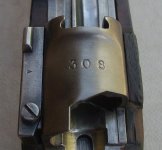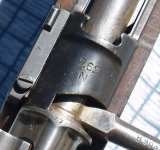The Brazilian Model 1909 was chambered in .30-06, made by DWM, basic 1898 pattern military rifle.
Many of the Central and South American nations used Mauser-pattern rifles, both German and Spanish. The dominant caliber was 7X57. Mexico developed a military rifle on the 98 Mauser design, but with features copied from the US M1903 Springfield, also in .30-06 caliber. Perhaps interesting to note, the M1903 Springfield itself was a pretty close copy of the Mauser (controlled feed, claw extractor function, etc) and the US actually lost a patent lawsuit over that, but World War One intervened on settling all claims.












